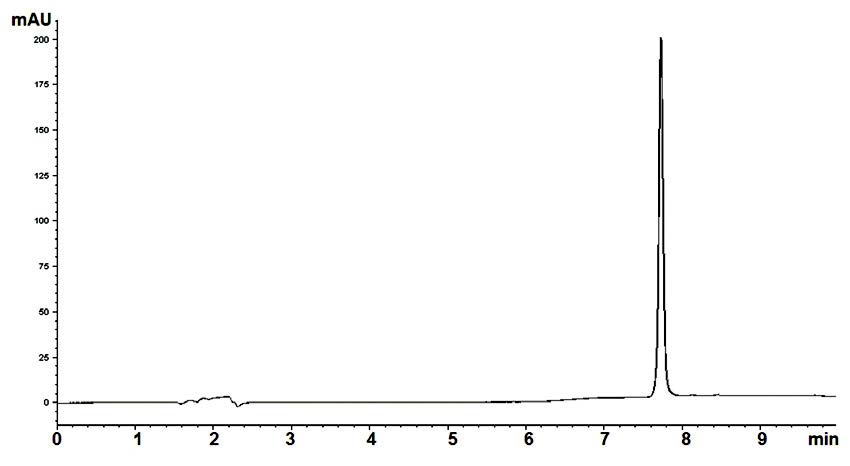Toxic Substance Found in Consumer Products Analyzed by HPLC
Bisphenol A (BPA) is a challenging compound for analysis with HPLC. Monitoring of this environmental and health toxicant is a necessary process for surveillance as well as risk assessment.
As shown in the 5 Chromatograms overlaid below, this Method produces Peak Shapes that are Symmetrical and with high Efficiency. The Repeatability of the Analysis is also remarkable as can be seen in the Figure. In addition, the Method Equilibrates rapidly with only 1 minute post time after the Gradient.

Above Chromatogram has 5 separate runs overlaid to show repeatability.

Peak:
Bisphenol A
Method Conditions
Column: Cogent Bidentate C8™, 4μm, 100Å
Catalog No.: 40008-75P
Dimensions: 4.6 x 75mm
Mobile Phase:
—A: DI Water / 0.1% Formic Acid
—B: Acetonitrile / 0.1% Formic Acid
Gradient:
| Time (minutes) | %B |
| 0 | 30 |
| 2 | 30 |
| 6 | 90 |
| 8 | 90 |
| 9 | 30 |
Injection vol.: 5μL
Flow rate: 0.5mL / minute
Detection: UV @ 275nm
t0: 0.9 minutes
Note: BPA is a synthetic compound widely used in industry as an epoxy resin, a polycarbonate, and an antioxidant in Polyvinyl Chloride (PVC) plastics. Epoxy resins are used as inner surface coatings for food and beverage cans. Polycarbonates are used in fabrication of plastic food containers (even infant feeding bottles). PVC is in a variety of products which come in contact with food. Even at low concentrations, chronic exposure to BPA is of toxicological concern. It has Estrogen like effects and causes a variety of adverse symptoms (e.g. genital malformations, testicular abnormalities, impairment in fertility or sexual functions).
Attachment
No 155 Bisphenol A, BPA Analyzed with HPLC pdf 0.2 Mb Download File


